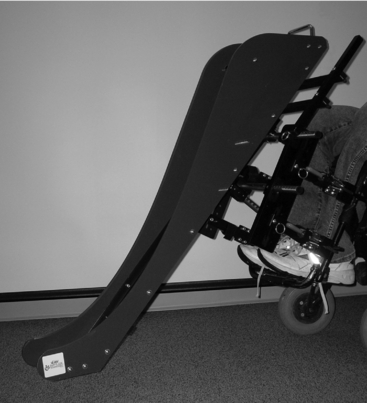Chapter 47 Assistive devices for recreation
In patients who have experienced physical impairment, the goal is accomplished by introducing new activities in which they can successfully participate or by reintroducing activities they enjoyed prior to the injury. Patients and their families should be shown that the individuals still are capable of participating in the entire spectrum of recreational activities, with a few appropriate modifications. One focus of therapeutic recreation intervention is to promote self-acceptance and confidence by helping individuals develop skills and talents to compensate realistically for the disability. By using a functional practical approach, the therapist can offer community reentry and ideas for a leisure lifestyle of the patient’s choice. Success is an essential part of the implemented program. A patient’s involvement in recreation must provide a measure of success with a minimum of frustration. Enjoyment, fun, and accomplishment are obvious rewards for participating in recreation. This chapter applies to individuals who incur any form of disability regardless of severity. Often, severe disability is addressed. The reader is encouraged to understand the various adaptations and that the intervention process requirement may be simpler if the complexity is reduced from the examples given. Peterson and Gunn’s Therapeutic Recreation Program Design: Principles and Procedures is the cornerstone reference for service delivery.6 Coyle et al.2 cite the many benefits of therapeutic recreation service.
Evaluation
Functional information should be gathered through Functional Independence Measure protocols (developed at State University of New York at Buffalo) in a coordinated effort with other treating disciplines.8 The Leisure Competence Measure (developed at Parkwood Hospital and Oklahoma State University) also should be used to focus on leisure concerns.3 The Leisure Competence Measure assesses leisure skills, attitudes, and preferences. These items in conjunction with the Functional Independence Measure can provide clear information on patient status and, more importantly, an indication of what should be addressed in a collaborative and cooperative interdisciplinary approach to developing an effective, efficient treatment program. It is important to understand that any measurement should be used as just that, and that the ultimate focus must be on an effective outcome well beyond discharge. Assessment modalities have been compiled in the three-volume series Assessment Tools for Recreational Therapy.1 The authors present a vast array of assessment processes that can be of value in therapeutic recreation intervention.
Active intervention
Clearly sharing the patient’s needs and desires with others through assertive behaviors and having realistic expectations of others (i.e., family and friends accompanying the patient) are extremely important tools for successful social and leisure encounters that will help the individual and family become less dependent on the health care system in the long run. Therapeutic recreation specialists should dedicate substantial time and effort in communication skill enhancement as well as decision-making training with the patient and, if possible, the family. A shopping trip is an excellent medium to practice effective options for requesting assistance while providing the patient with the opportunity to exercise self-directed decisions. Dealing with a store clerk, cashier, waiter, and family in a public forum provides the essential components to practice vital interactions.
Skills in the use of adaptive equipment, whether durable medical equipment or less medically essential equipment, must be learned. A broad spectrum of equipment is available, such as a mouth-operated long bow trigger, a bowling adaptation that attaches directly to the patient’s chair (Fig. 47-1), a fishing device that casts and reels without requiring the use of hands (Fig. 47-2), and a pool cue modified for disabled use (Fig 47-3). The social/recreational experience is greatly enhanced as the individual learns and practices appropriate and effective use.
< div class='tao-gold-member'>
Stay updated, free articles. Join our Telegram channel

Full access? Get Clinical Tree








